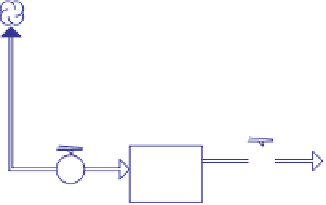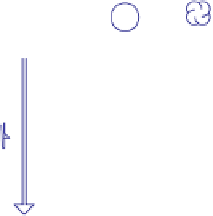Database Reference
In-Depth Information
Reproductive Adults
Larva 1
Total Suckers
Larva 2
Sucker Adder
Adult
Larva 3
Adder Out
Suckers In
Damage to Trees
Change in Damage
Sum of Damage
Fir Death
Infected Population
Uninfected Fraser Fir
Infection
Death Time
Fig. 11.19
As Figure 11.21 shows, the pest population grew exponentially. Without any pes-
ticide control,
A. piceae
infected every tree within approximately 1.5 years. Since
complete death of the tree takes between 1 and 2 years (accounted for by using the
infected population conveyor), all of the trees would be decimated in less than 4
years. Given a longer running time, all 20 Fraser fir trees would be accounted for in
the Fir Death stock.
Since biological control of the
Adelges piceae
has proven ineffective, chemical
control is necessary to ensure a healthy Fraser fir population
4
,
5
. To model the effects
of a pesticide control program, we altered the
Adelges piceae
death rate. By creat-
ing a pesticide “kill rate,” we could easily manipulate the pest population. However,
4
Mitchell, R.G. 1962. Balsam woolly aphid predators native to Oregon and Washington. Agricul-
tural Experiment Station, Oregon State University, Technical Bulletin 62, 63pp.
5
Hastings, F.L., F.P. Hain, A. Mangini, and W.T. Huxster. 1986. Control of the balsam woolly
adelgid (Homoptera: Adelgidae) in Fraser fir Christmas tree plantations. J. Econ. Entomol. 79:
1676-1680.








